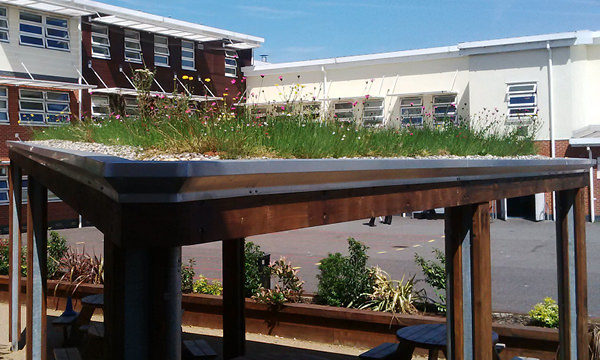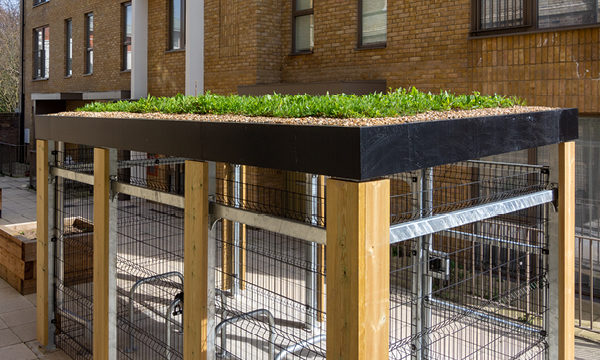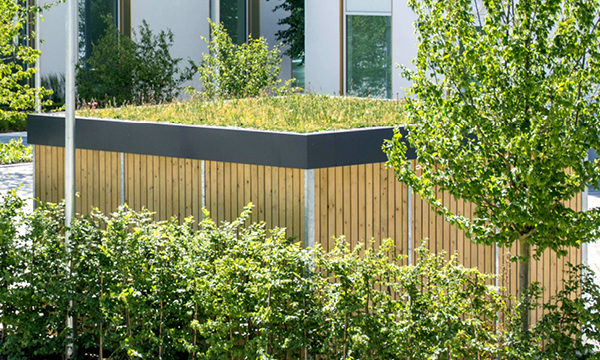
Canopies & Walkways
- All Canopies & Walkways
- Fabric Canopies
-
Polycarbonate Roof
Canopies - Covered Walkways
- Enclosed Canopies
- MUGA Canopies
- Timber Canopies
- Entrance Canopies

Green Roof Structures for Schools
Tailored towards storage units and canopies, our green roof structures are visually striking, biophilic designs that create the means for reproducing varied ecosystems in as little as a few square metres. Possessing the robust qualities necessary to thrive in urban environments, green roofs help to reduce the visual impact of storage units and canopies by allowing them to more effectively blend in with their surrounding landscape.
Aside from an annual undertaking of deadheading and the removal of self-sewn weeds, green roof structures require minimal maintenance needs. In busy school environments, this can equate to cost and time-saving time benefits.



Green roof structures help bring the natural world into an everyday context. Appropriately, they benefit from exposure to natural light and thrive in outdoor spaces. In this regard, they hold the potential to operate as alfresco dining spaces, offering staff and pupils an attractive space that can be enjoyed year-round.
Green roofs increase biodiversity, encouraging a healthy atmosphere and cleaner air by negating harmful Co2 levels. They also function as a means of absorbing noise and trapping dust, offering advantageous characteristics in lively school environments. The installation of these structures can therefore be utilised as an effective means to raise awareness amongst pupils as to the importance of environmental practices.
Benefitting from ease of specification, our green roof designs demonstrate high functionality alongside their standout visual appeal. Sustainable construction is maintained throughout, with green roof systems available as either extensive or intensive, alongside possibilities for bespoke designs.
Our extensive green roofs contain a pre-planted sedum mix that accommodates drought-resistant plants. Holding a shallow layer of substrate, extensive green roofs are ideal for larger projects, such as canopies. In contrast, our intensive green roofs contain a deeper layer of substrate that works best with smaller projects. They hold a sedum and wildflower mix that provides a prolonged flowering period, usually taking place from April to September.